#the 8th century.
Text





Excerpt from The Song of Roland, translated by Norma Lorre Goodrich (Medieval Myths)
#THIS HAS BEEN A PET PROJECT. I FUCKING LOVE THE SONG OF ROLLAND#song of roland#clay does art#so. okay bear with me#the song of Roland / chanson de rollanz was an epic poem written in the 11th century about the real battle of Roncevaux Pass in#the 8th century.#so 11th c ? we are smack in those middle ages#and its old copies were recorded as illuminated manuscripts#yet! it is technically an epic!! its an epic poem!!!! I don’t believe there were many written between Roland and the Aeneid (19 BCE)#in the west?#so like . WILD COMEBACK!!#this comic (?) is me playing with this idea of both muddling and clarifying the reality (8th c. real battle. he died.)#with the context of the poem (11th c. chivalric code. this was the hamilton of the time I must assume)#the translation from old french (flows better in modern English than it does in modern french apparently?)#and me. making it a scrolling comic. inspiration from real armor of the 8th century#although 11th c manuscripts armor them like they’re contemporary#I did hand lettering! as a manuscript would be!!#but my composition is wildly different than theirs#I could go on ! but I shant. ty for reading#no id#< I do not. know how . I would do this one#long post#kinda
650 notes
·
View notes
Text





~ Noble Lady.
Date: 700's
Period: Tang dynasty
Culture: Chinese
Medium: Earthenware with paint
931 notes
·
View notes
Text


danmarch 🐉💎
#honkai star rail#dan heng#march 7th#danmarch#fanart#hsr#what else do i tag. i have no idea#anyway. im breaking my VERY LONG oc art streak to post my one(1) contribution to star rail#i care them very much#ive been playing this game so religiously and they have not left my team#tragic past(emo) vs tragic past(girly pop)#theres NO WAY with marchs very teenage girl mind that she does not have a crush on the hot cool mysterious yet caring dragon guy#who stays in the room right next to her#and the fact that he teases her so much........#the whole ass belabog quest he throws in little harmless march roasts every so often#he fucking CARE her#i bets shes like a filipino mom with that camera. every oppertunity (picture!!!!)#and dan heng gets dragged into it#he is honing his photography skills against his will#any nice place? shes like (lemme pose can you get a photo of me?)#dan heng just sighs#they bond over silently judging stelle rummaging through the garbage#cast each other that best friend glance as half her body is sticking out of a trash bin#i like to think you see them hanging out on the train together#with dan heng reading some obscure 8th century book on civilization pattern and development#and march is humming and putting stickers and aesthetic shit in her scrapbook#taping a piece of antimatter legion loot in the middle of a page#and with bubbly handwriting (we beat some bad guys today!!! <333 so fun!!)
632 notes
·
View notes
Text
"Burginda’s letter is instructing the young man in his spiritual endeavours, and the contents of the (albeit short) letter reveal that she was highly educated and well-read. Written in a period that many still refer to erroneously as an intellectual ‘Dark Ages’, Burginda’s letter uses Greek words, utilises biblical exegesis, imitates Christian poetry like the fifth-century Psychomachia of Prudentius, and references both the sixth-century Italian poet Arator and the classical Roman poet Virgil. It also contains a reworking of a description of heaven found in a Latin poem from Africa that dates to c. 500. Burginda was clearly a very well-read intellectual.
This letter can be used as an example to refute many popular misconceptions about the early middle ages. The first misconception is that antique texts were neglected or unknown in this period. The second misconception is that medieval women were uneducated and unintellectual. The third misconception is that there was little or no intellectual transmission between Africa and Europe in this period. Burginda’s letter proves all these assumptions false. Not bad for two paragraphs of Latin."
#burginda#history#women in history#women's history#8th century#england#english history#female writers#herstory#middle ages#medieval#medieval women
584 notes
·
View notes
Text
when you're being mean to me this is who you're being mean to. btw
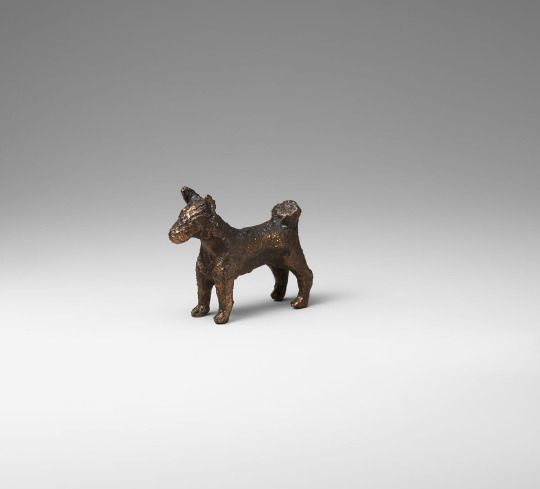
#tagamemnon#i am in fact bronze assyrian dog figurine ca. 9th-8th century bc#queueusque tandem abutere catilina patientia nostra
330 notes
·
View notes
Photo

Odysseus' journey.
by LegendesCarto
413 notes
·
View notes
Text


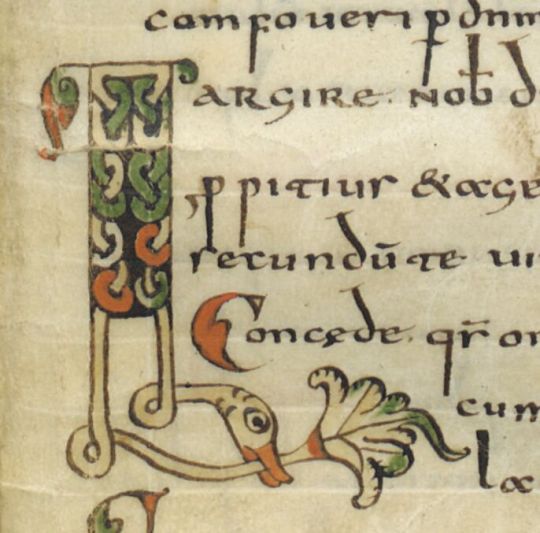
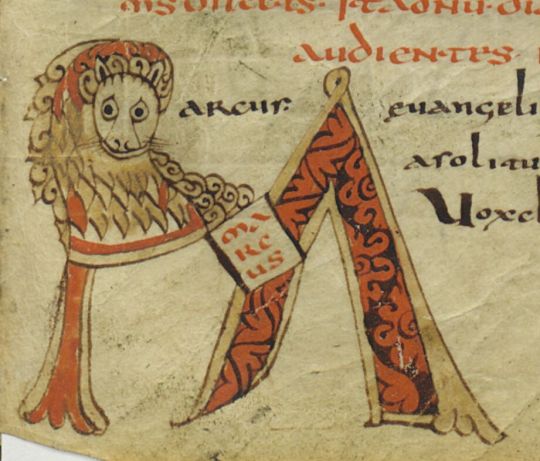



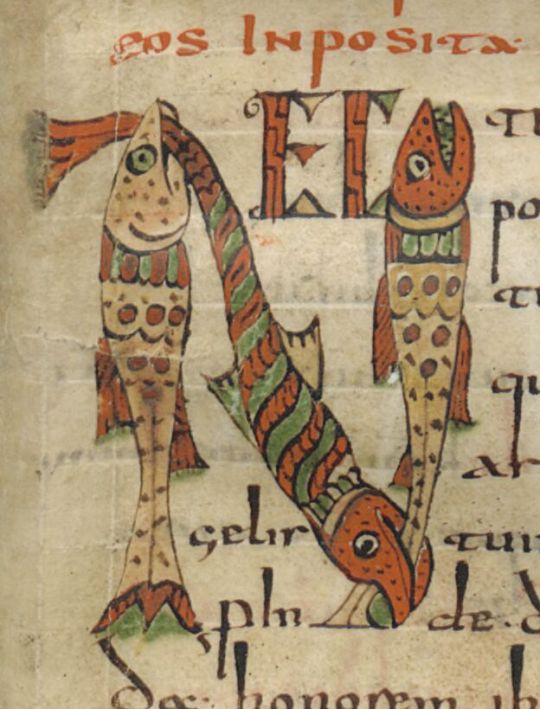
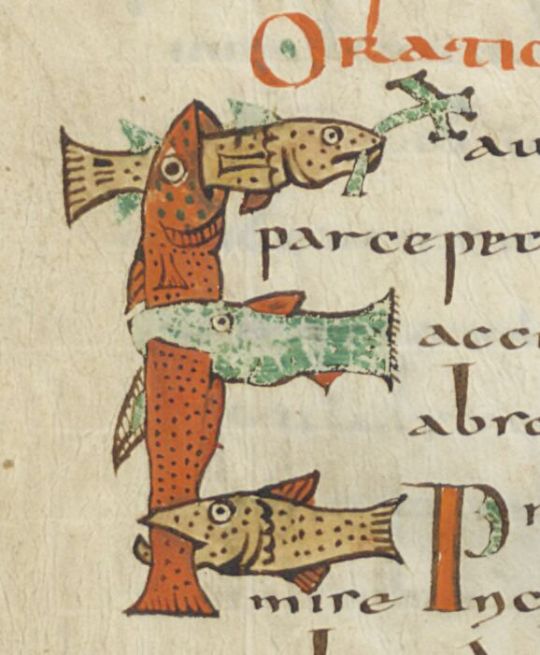
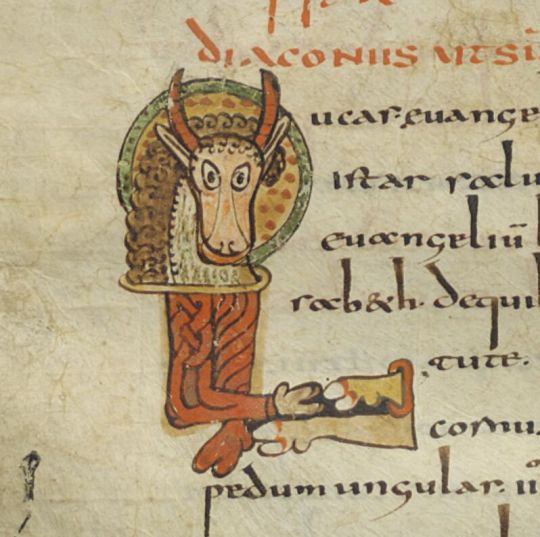
joyful calligraphy
in the "sacramentarium gelasianum", france, ca. 780-800
source: Paris, BnF, Latin 12048
#medieval manuscripts#medieval calligraphy#sacramentarium gelasianum#medieval animals#medieval art#calligraphy#illumination#illuminated manuscript#8th century
947 notes
·
View notes
Text
ANCIENT RUS DIVINE COMEDY AU :DDD
dont ask me why i was just feeling like it (couldnt make any of their heights match)
Dante's name is Dusia or Dania (yes the first one sounds like dussy-) and Guido is Glieb :D


Virgil is Vavila (probably shouldve made him old but i need a gusliar bard twink from ancient rus) and Beatrice is Viera


Gemma is Euhienia + bonus little dantino (dushen'ka :з) ina big ass papaha.


of course dante would wear a freaking papaha.

#not satisfied with these because virgil and beatrice look like they are from the 8th century#gemmas from 15th#and dante and guido are like from degraded 18th century/#dante alighieri#divine comedy#the divine comedy#dante#la divina commedia#virgil#vergil#beatrice#guido cavalcanti#gemma donati#au#alternate universe#ancient rus#russian history#russian tag#la divina comedia#divina commedia#ancient rus au
114 notes
·
View notes
Text
something that has interested me for years is the ways in which mysticism within religions allows for a kind of heretical or non-orthodox thought, and particularly within the context of christianity i find a lot of that heretical mysticism stumbles into the same epiphanies and ontologies that are found within south/east/asian religions as well as among contemporary medieval mystics studying kabbalah and sufi thought. i'm particularly fond of when christian mystics would stumble into nondualist belief, and how often nondualism is positioned as deeply unorthodox when it's possible to find mystics across time and space and culture who have arrived to similar conclusions, and the degree of spiritual and almost scientific honesty expressed by them within that belief. how much of their words still ring true, even with all we know now about the universe, because of their willingness to face the unknowable and the immense and sit with it simply because they understand it is sometimes all we can do
#like when a christian mystic in 8th century ireland accidentally stumbles into what is essentially buddhism#without having any awareness of buddhism whatsoever#the understanding of god as something within rather than above - a deep inside existence rather than external#like atoms or cells....#perhaps literally atoms or cells
66 notes
·
View notes
Text
Byzantine shipwreck
Last year, two amateur divers found a piece of wood sticking out of the sand off the coast of Israel. A little later it turned out to be a Byzantine shipwreck from the 7th or 8th century AD.

This merchant ship, made of fir and walnut wood, was loaded with treasures from all over the Mediterranean. The wreck contained more than 200 amphorae with the remains of fish sauces, olives, dates and figs. What led to its sinking more than 1,200 years ago is unknown.

The once 25-metre-long vessel at the Ma'agan Mikhael B site lies at a depth of only about three metres. Further research and recovery of the artefacts continues to this day, but it is possible to identify food vessels of different origins and languages. This means that the ship sailed from port to port during a time of great religious unrest. At that time, the Christian Byzantine Empire was losing its hold on the eastern Mediterranean and Islamic rule was spreading. The shipwreck off Ma'agan Michael is evidence that trade with the rest of the Mediterranean continued despite the religious schism, contrary to what scholars have assumed.
321 notes
·
View notes
Text

Surya, the Sun God
early 700s, Kashmir
Surya wears a long tunic and boots suitable for riding horses across the grassland steppes of Central Asia. The sun god was of paramount power among the people of Central and Western Asia who followed religions such as Zoroastrianism, a pre-Islamic faith emphasizing a sacred duality between light and dark. When the image of the sun god began to be made in India from the 100s BC on, he is shown in the dress of the people who revered him the most. Surya is worshipped throughout the Indian subcontinent and Himalayan regions of Kashmir and Nepal alongside both Hindu and Buddhist deities.
52 notes
·
View notes
Text









Out and about.
I went outside, where it was cold and rainy, because I’m a dumbass.
(Let’s also pretend that this is a build kit post, as I haven’t been able to do much with finals recently, but I had this laying around and I felt weird not posting for so long so here it is.)
#gunpla#gundam#gundam model#i’m really bad at photography#bandai#mecha#model kit#model kit photography#gundam universal century#gundam 0079#Gundam 8th ms team#mobile suit gundam#gundam high grade#gundam model kit#gundam master grade
97 notes
·
View notes
Text




~ Cylinder Vessel with Palace Scene.
Place of origin: Guatemala, Petén, Dos Pilas or vicinity
Culture: Maya, lk style
Date: A.D. 740–800
Medium: Slip-painted ceramic with post-fire pigment.
#8th century#9th century#cylinder vessel#ceramics#palace scene#petén#dos pilas#guatemala#ik style#maya#mayan#pigment#Mesoamerica#pre columbian#a.d. 740#a.d. 800#history#museum#archeology#archaeology
732 notes
·
View notes
Text

Ancient Greek Bronze Statuette of a Sphinx
Greek, 8th century B.C.
Bronze
#Ancient Greek Bronze Statuette of a Sphinx#8th century B.C.#bronze#bronze statue#bronze sculpture#ancient artifacts#archeology#archeolgst#history#history news#ancient history#ancient culture#ancient civilizations#ancient greece#greek history#greek art#ancient art#egyptian history
26 notes
·
View notes
Text

Japan’s fifth empress regnant, Genshō (680-748), ruled after her mother, Empress Genmei. Like her mother, she was a protector of culture and a reformer.
From Mother to Daughter
When Empress Genmei abdicated in 715, she passed the throne to her daughter instead of her sickly and too-young grandson. This created a unique case in Japanese history, marking the Nara period as the pinnacle of female monarchy in Japan. Unlike previous female sovereigns, Genshō had never been married before.
Her reign marked the height of the Nara state. One of her major achievements was the compilation of the Yōrō code in 718, a faithful copy of the earlier Taihō code. It was widely distributed throughout the country, ensuring effective central administration. This code became the legal basis of government for the next two centuries.
Cultural Contributions
Like her mother, Genshō made significant cultural contributions. In 720, the Nihon Shoki, a work aiming to produce a national history of Japan and the imperial family, was completed and officially sanctioned. Using diverse sources such as Chinese and Korean documents, government records, and house journals, it covered a longer period than the earlier Kojiki, including the reign of Empress Jitō, in a scholarly tone.
Interestingly, the two chronicles linking the imperial family to the sun goddess Amaterasu were sanctioned and promoted by female rulers.
Retired Empress
Genshō spent nine years on the throne. She stepped down in 724 to make way for her 23-year-old nephew, Emperor Shōmu (701-756). Unlike her mother, Genshō did not become a nun. She assumed the title of Daijō Tennō (or "retired emperor") and remained active for another 24 years.
My Ko-Fi
Further reading
Shillony Ben-Ami, Enigma of the Emperors Sacred Subservience in Japanese History
Tsurumi Patricia E., “Japan’s early female emperors”
Aoki Michiko Y., “Jitō Tennō, the female sovereign”,in: Mulhern Chieko Irie (ed.), Heroic with grace legendary women of Japan
#empress gensho#japanese empresses#history#historyedit#women in history#women's history#japan#japanese history#8th century#nara period#historyblr#historical figures#queens#powerful women#empresses#historical women
87 notes
·
View notes
Text

Disk brooch, found in Northamptonshire, 8th Century
From the British Museum
#disk brooch#brooch#accessories#fashion#fashion history#8th century#700s#anglo saxon#viking age#silver#gilded
24 notes
·
View notes